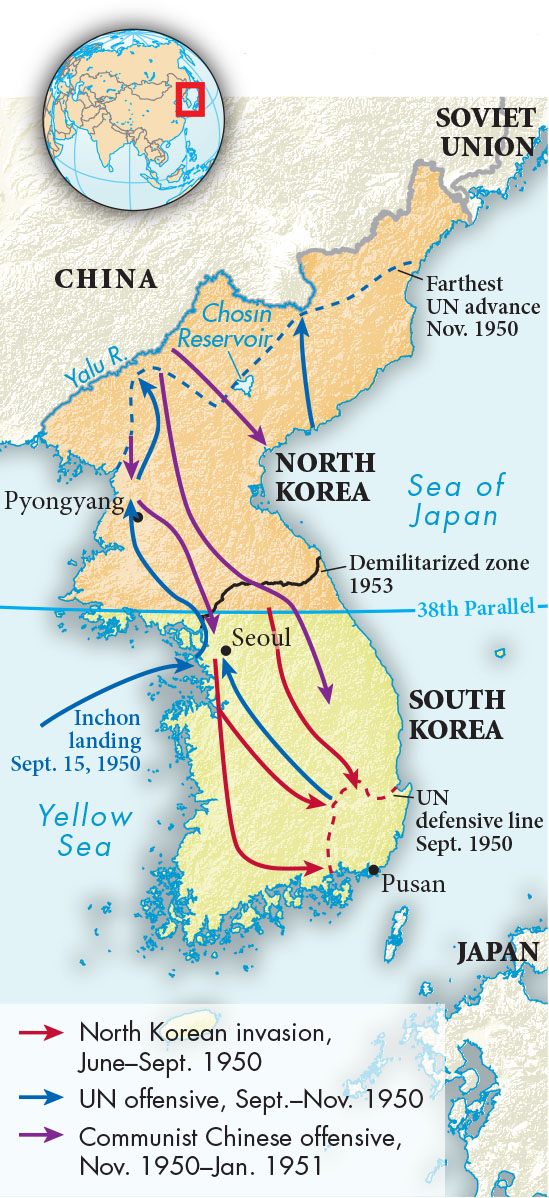A History of World Societies:
Printed Page 970
A History of World Societies Value
Edition: Printed Page 982
Chapter Chronology
As tensions rose in Europe, the Cold War spread to Asia. In 1945 Korea, like Germany, was divided into Soviet and American zones of occupation, which in 1948 became Communist North Korea and anticommunist South Korea. When the Communists triumphed in China in late 1949, many fearful Americans saw new evidence of a powerful worldwide Communist conspiracy. When the Russian-backed Communist forces of North Korea invaded South Korea in spring 1950, President Truman sent U.S. troops to lead a twenty-nation UN coalition force to stop what he interpreted as a coordinated Communist effort to dominate Asia.
The Korean War (1950–1953) was bitterly fought, but ended in a stalemate with little more than symbolic gains for either side. The well-equipped North Koreans conquered most of the peninsula, but the South Korean, American, and UN troops rallied and drove their foes north to the Chinese border. At that point China intervened and pushed the South Koreans and Americans back south. In 1953 a fragile truce was negotiated, and the fighting stopped. Thus the United States extended its policy of containing communism to Asia, but drew back from invading Communist China and possibly provoking nuclear war.
Mao and the Communists entered the Korean conflict to prove that China was once again a Great Power and to challenge what they saw as U.S. capitalist imperialism. The Chinese army’s ability to fight the United States and its allies to a bloody standstill on the Korean peninsula mobilized the masses and increased Chinese self-confidence. For its part, the U.S. government demonstrated a willingness to wage war against the spread of communism and to guarantee the autonomy of its ally, South Korea. Fighting a war in Korea did not prevent the Chinese from also expanding their territory in the west: in 1950 they invaded the region of Tibet and declared Chinese sovereignty over the country in 1951.
